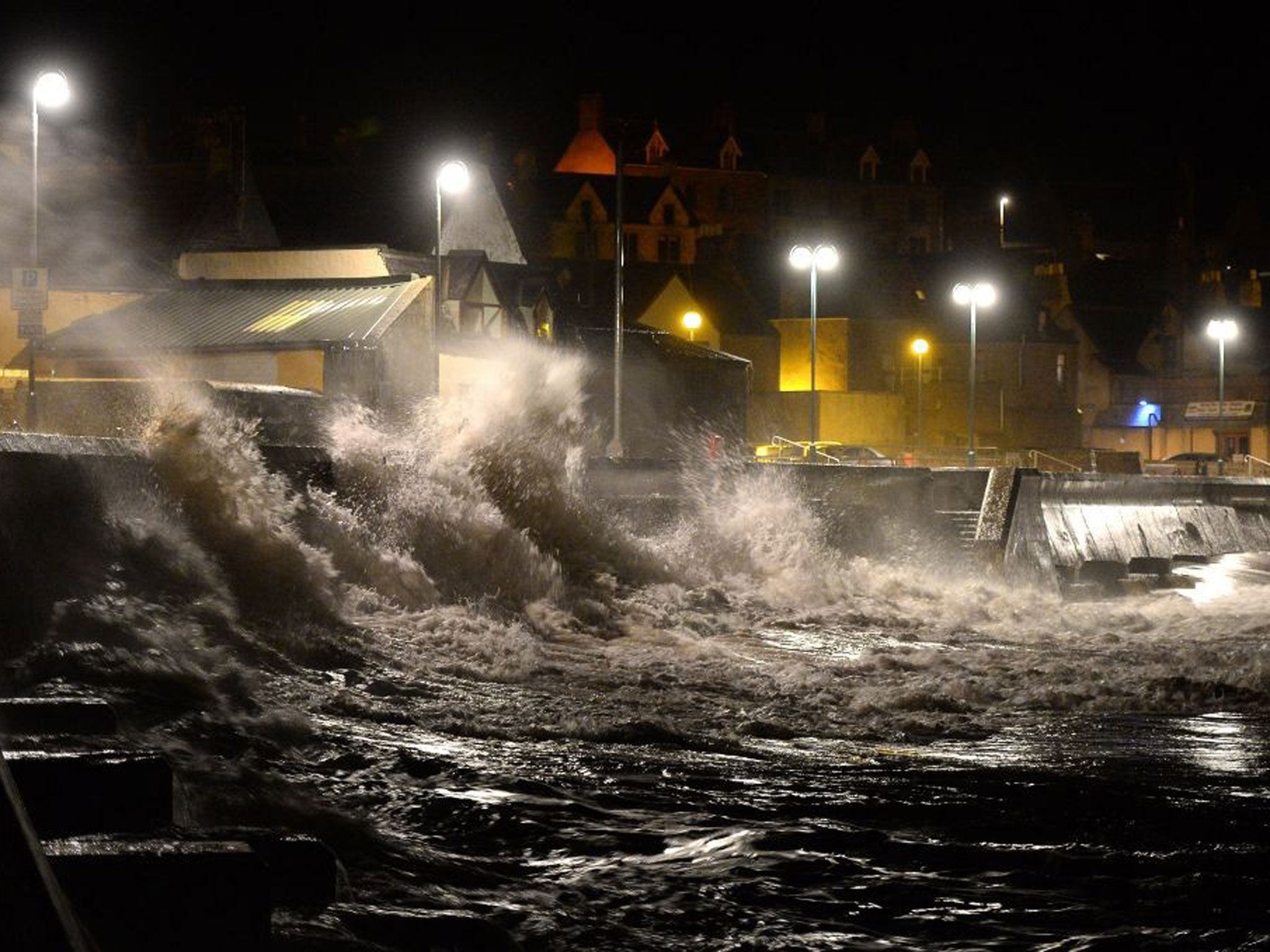UK extreme weather: Government in perfect storm over climate change gaffe as floods render homes uninsurable
Ministers accused of hugely underestimating number of households rendered uninsurable by repeated flooding

The Government was on Friday night accused of hugely underestimating the number of households rendered uninsurable by repeated flooding after admitting that it had not taken into account the effects of climate change when allocating money to protect them.
The oversight was raised as thousands of people prepared to spend another night away from their homes after the worst tidal surge in more than 60 years.
Families in Norfolk and across much of the East Coast were sheltering in evacuation centres while shopkeepers took stock of the damage to their goods.
As thousands began clearing up after record-breaking high tides, many were unable to return to houses rendered uninhabitable by the floods, while authorities warned people to prepare for further high tides on Friday night and Saturday.
Seven families have lost their homes to the sea in the Norfolk village of Hemsby, with the damage being felt from Scotland and East Anglia to the South Coast and Wales.
Steven Connelly, 54, and his wife Jacquie, 65, told of how they were out drinking at their local pub when a friend came to warn them that their beachside home in Hemsby was about to fall into the sea.
“I just got in there in time to get my two cats. People from all over the place then turned up and formed a human chain to help remove our furniture,” said Mr Connelly.
Although floodwaters were said to be receding on Friday, the Environment Secretary, Owen Paterson, warned that “this is not over” and that there were still “exceptionally high tides to come”.
Two men have died so far as a result of the storm. Robert Dellow, 54, from Lowestoft in Suffolk died when his lorry was blown on top of two cars in West Lothian and the other after being struck by a falling tree during the storm. The second man was named by police on Friday as John White, 83, who died in Retford, Nottinghamshire.
Mr Paterson paid tribute to Britain’s flood defence systems, which he said had saved hundreds of thousands of homes. “Conditions like this only occur in some places every 500 years, so it’s good that over 800,000 properties were protected,” he said.
The Thames Barrier closed on Thursday night and was due to close again last night.
The storms sweeping across northern Europe cannot be directly attributed to climate change. However, scientists agree that global warming will increase the frequency and intensity of floods as a result of rising sea levels and an increasing number of storms.
Ministers agreed a deal with insurers three months ago that would protect 500,000 households in areas now deemed to be at such high risk that their owners are unable to get cover. The £180m raised each year – which would be managed by a not-for-profit fund known as Flood Re – ensures that properties remain insurable through a £10.50-a-year levy on all residential premiums due to be introduced in 2015.
But an impact assessment published by the Government last week admits that its numbers don’t cater for any rise in flooding as a result of climate change – despite a separate piece of Government research estimating that 800,000 residential properties could be exposed to a significant risk of coastal or river flooding by the 2020s.
“The analysis of the baseline scenario assumes that flood risk remains the same over time,” said last week’s impact assessment, adding that it does not “take account of changing flood risk due to deterioration of existing flood defences, climate change or development in flood-risk areas”.
“As a working hypothesis we assume that the effects of climate change and investments in flood defences are broadly offsetting,” the report added. Guy Shrubsole, a campaigner at Friends of the Earth, said: “Following the devastating damage caused by the biggest storm surge in the past 60 years, its unforgiveable that the Government’s future flood insurance plan excludes consideration of climate change.”
“Its own figures show that global warming will put hundreds of thousands more British homes at risk of flooding in future – yet ministers’ policies fail to reflect this.”
Bob Ward, policy and communications director at the London School of Economics’ Grantham Research Institute, added: “To say that the effects of investment in flood defences balances out the effects of climate change is a joke – especially given that the Climate Change Committee [the government’s independent advisory body] has already pointed out that current investment is not in line with what is needed to take account of climate change.”
What is a storm surge?
A storm surge occurs when a number of factors come into play – a low pressure system, strong winds, high tides and the geography of land and sea. All these played a role in the storm surges on the east coast of England this week.
The air rising at the centre of the intense low pressure system that has passed over the north of Scotland into the North Sea had the effect of lowering the weight of air sitting on the water, causing the sea surface to rise and form a slight bulge.
Strong northerly winds have blown this bulge of water south, at the same time push- ing it higher. This, combined with the high spring tide (related to the Moon, not the season), has forced the storm surge down the coast, causing it to rise even higher as it is squeezed into the narrow channel of sea between England and the Continent.
Join our commenting forum
Join thought-provoking conversations, follow other Independent readers and see their replies
Comments